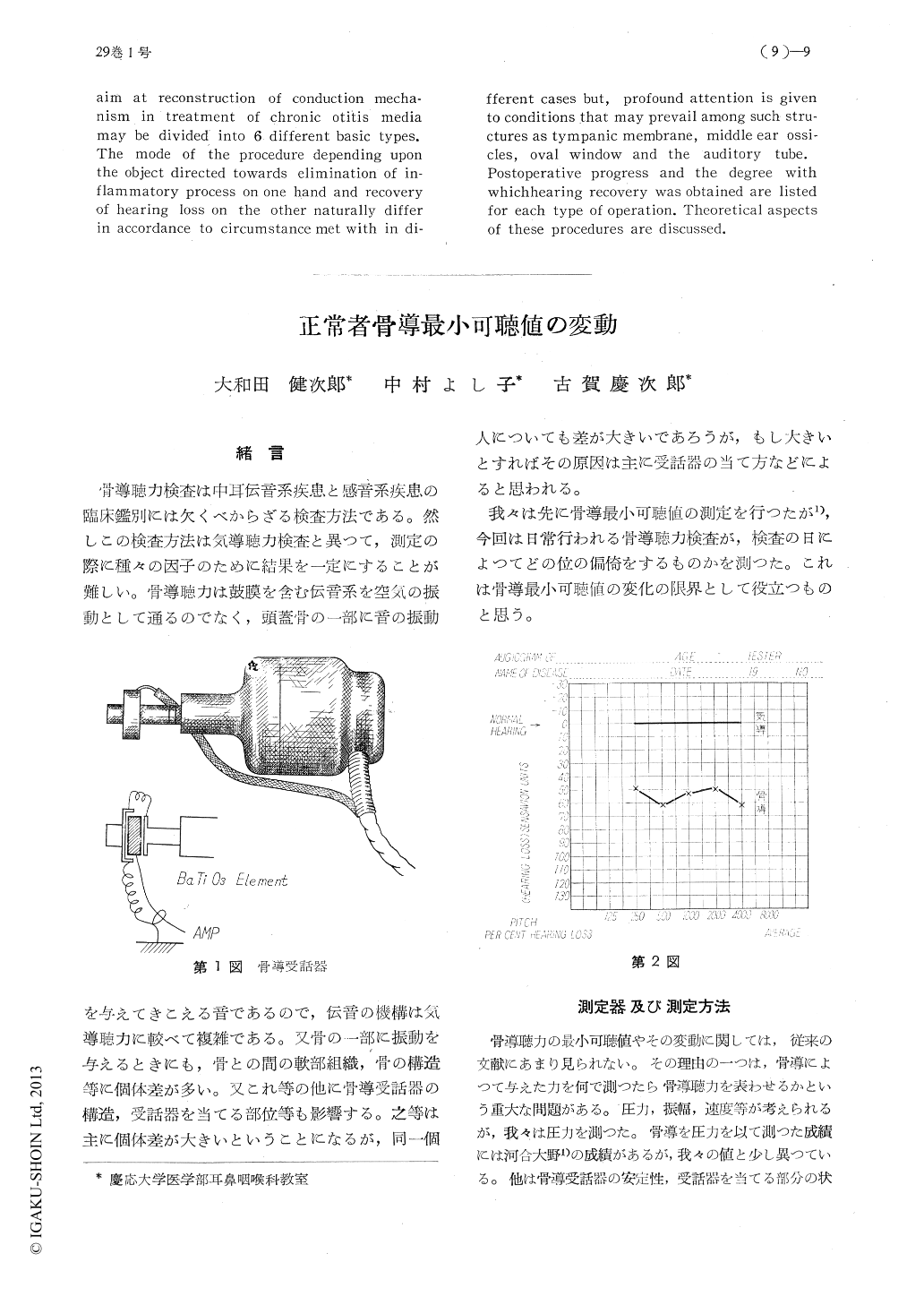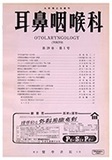- 有料閲覧
- 文献概要
- 1ページ目
緒言
骨導聴力検査は中耳伝音系疾患と感音系疾患の臨床鑑別には欠くべからざる検査方法である。然しこの検査方法は気導聴力検査と異つて,測定の際に種々の因子のために結果を一定にすることが難しい。骨導聴力は鼓膜を含む伝音系を空気の振動として通るのでなく,頭蓋骨の一部に音の振動を与えてきこえる音であるので,伝音の機構は気導聴力に較べて複雑である。又骨の一部に振動を与えるときにも,骨との間の軟部組織,骨の構造等に個体差が多い。又これ等の他に骨導受話器の構造,受話器を当てる部位等も影響する。之等は主に個体差が大きいということになるが,同一個人についても差が大きいであろうが,もし大きいとすればその原因は主に受話器の当て方などによると思われる。
我々は先に骨導最小可聴値の測定を行つたが1),今回は日常行われる骨導聴力検査が,検査の日によつてどの位の偏倚をするものかを測つた。これは骨導最小可聴値の変化の限界として役立つものと思う。
Ohwada and associates made attempts to de-termine the amount of fluctuation that may occur in threshold hearing by bone conduction in a normal hearing person when tested in se-ries of different days. They found that, within the range of 250 to 4,000 cps, that amount was the maximum of 15 db and the figure appeared to be in agreement with such fluctuations that may occur in threshold hearing by air condu-ction and similar mode of testing.
Furthermore, the question on deviation that may be found in the threshold hearing by bone conduction in normal persons is discussed; the two types of thresholds, bone and air condu-ctions are compared to each other. As a result it is found that the bone conduction exceed that of the air by 60 db. Consequently, the au-thors state that, threshold testing becoms a difficulty when air conduction hearing shows a loss which may bebeyond 60 db and the he-aring by bone conduction beingthe better of the two.

Copyright © 1957, Igaku-Shoin Ltd. All rights reserved.


